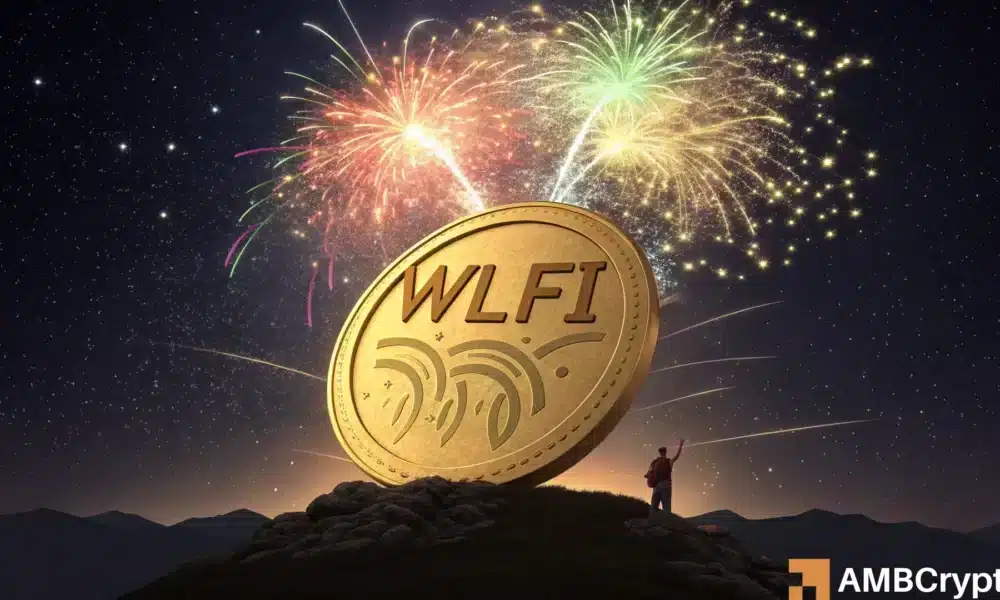WLFI’s Move to Broaden Crypto Access: A New Era for Trump-Linked Digital Finance
In a bold shift towards inclusivity, WLFI (World Liberty Financial), associated with notable figures like Donald Trump, is proposing to make its token publicly tradable. This change aims to transition the project from a closed network to a more accessible, open ecosystem, signaling significant developments in both the cryptocurrency landscape and Trump’s increasing involvement in digital finance. With the backdrop of Independence Day celebrations, this move also brings forth discussions on governance, tokenomics, and the intertwining of politics and cryptocurrency.
A Clear Development Proposal
The WLFI team’s proposal outlines a detailed plan to transform the token’s current closed model into one that promotes broader participation. If the community endorses this vote, the WLFI token would become fully transferable, enabling peer-to-peer trades and listing on secondary markets. Such a shift would be monumental for the project, providing opportunities for token holders to liquidate their assets and engage with a wider audience. Supporters within the community stand to benefit initially through a partial unlocking of their holdings, while the founders and team will have their tokens locked longer to instill trust and security. This strategy seeks not only to expand its user base but also to enhance participation and growth within the WLFI ecosystem.
Expanding Governance Access
One of the notable aspects of this proposal is the enhanced governance it would provide to its token holders. Under the new model, stakeholders would acquire voting rights on several crucial issues, including emissions, treasury allocations, and the incentive structures critical to the project’s success. This democratic approach could lead to a more decentralized decision-making process, where the direction of WLFI is no longer determined solely by insiders. Instead, a diverse group of participants invested in the project’s growth would steer its future. Additionally, a separate vote will determine the unlocking schedule for remaining tokens, further empowering the community to influence major decisions.
Symbolism of Timing
Launching this proposal on Independence Day is not just a coincidence; it symbolizes a desire for freedom and independence in the financial realm, particularly as cryptocurrencies gain prominence. The Trump family’s backing of WLFI mirrors Donald Trump’s foray into digital assets, which now constitute a notable portion of his wealth. As of June 2025, crypto assets represent a substantial segment of Trump’s $6.9 billion net worth, further highlighting the financial potential of these digital currencies. The push for tradability in WLFI comes at a time when the intersection of politics and cryptocurrency is increasingly scrutinized.
Controversy and Conflicts of Interest
While WLFI’s move toward public trading is groundbreaking, it also raises concerns regarding potential conflicts of interest. Critics point to existing legislation, such as the COIN Act, which could come into play if token trading becomes intertwined with political influence. The debate surrounding this proposal extends beyond mere token accessibility; it encapsulates broader questions about how political figures should engage with evolving financial systems. As WLFI seeks to democratize its ecosystem, the fine line between cryptocurrency and politics is bound to face continued scrutiny and debate.
The Road Ahead for WLFI
Assuming that the community supports the proposal, the WLFI project could witness a significant shift in its trajectory. The transition to a public trading model would not only enhance liquidity but also attract a new wave of investors and stakeholders who may seek to engage with the project’s future. By fostering an inclusive environment, WLFI could position itself as a significant player in the rapidly evolving crypto landscape. The long-term implications of this move could lead to innovation, greater engagement, and improved governance structures that align with the interests of a broader community.
Conclusion: A New Chapter in Crypto and Politics
As the world of digital finance continues to evolve, WLFI’s proposal to transition to a public trading model underscores the changing landscape in both cryptocurrency and political engagement. With the backing of prominent figures and a focus on expanding participation, this initiative could serve as a model for other projects. While the potential for conflicts and the need for regulatory oversight remains a pressing concern, the push for a more inclusive crypto ecosystem is an essential step towards democratizing finance. As this proposal unfolds, it will undoubtedly generate interest and debate about the future of digital assets and their place within our financial and political frameworks.


